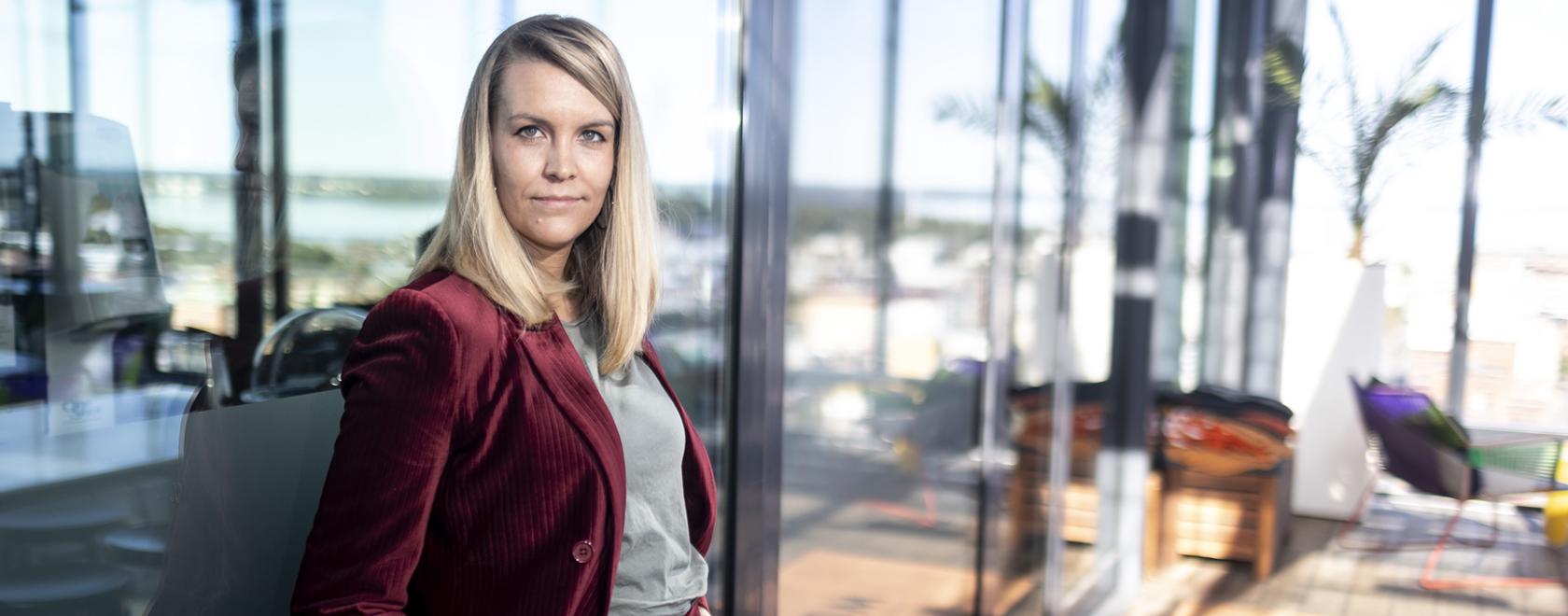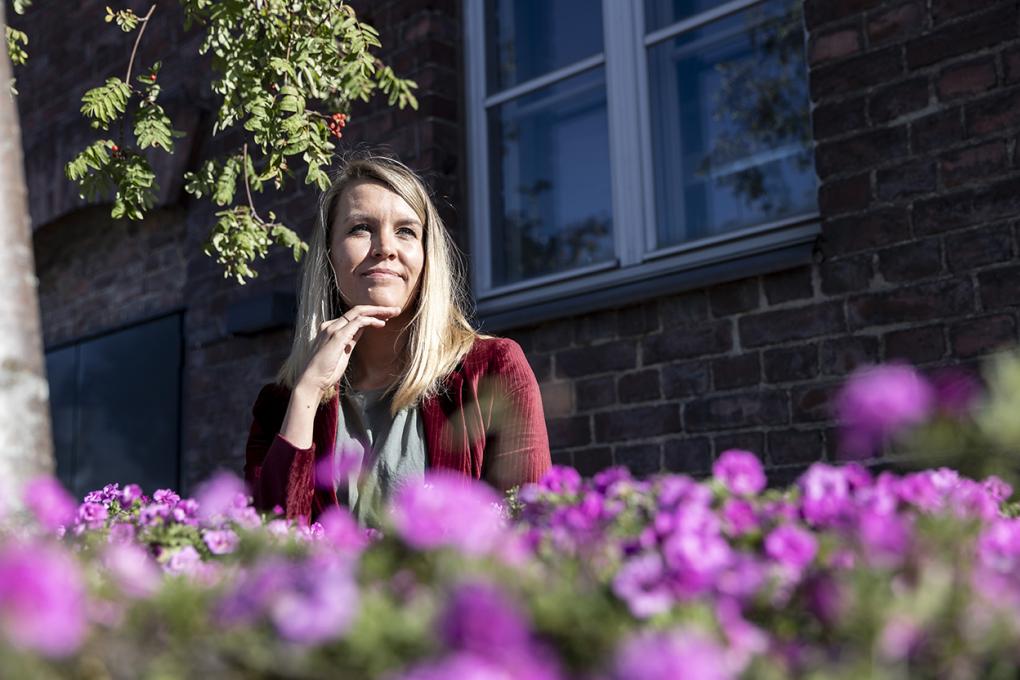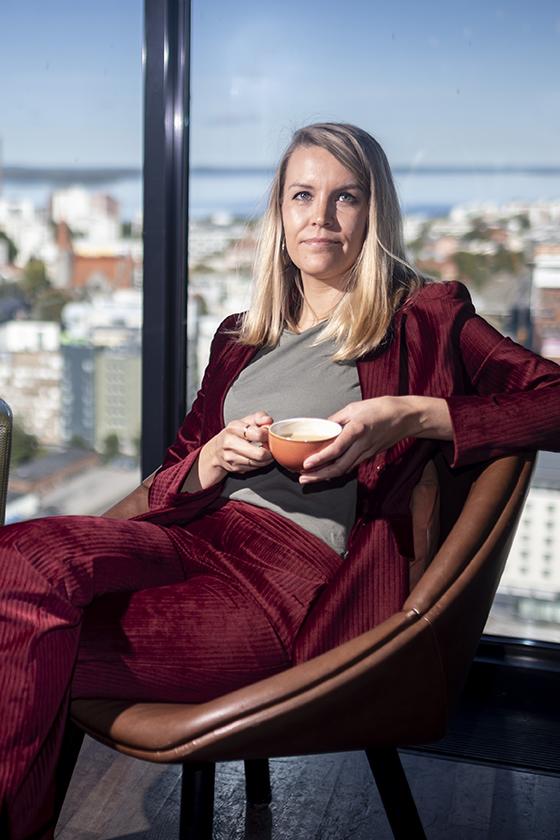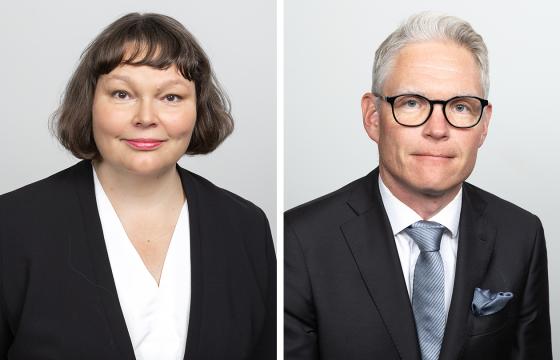
Text Susanna Bono
Photos Rami Marjamäki
It all began with handbag videos.
Ten years ago, the reporter and researcher Ida Roivainen was studying social sciences at the University of Maastricht in the Netherlands. In between her studies, she noticed herself watching more and more What’s In My Bag videos on YouTube.
In these videos, young women present the contents of their handbags.
“At first I was pretty biased and maybe also a bit annoyed that such superficial videos are made. But I still immersed myself in this world.”
Roivainen soon noticed that there was a lot more in the videos than appeared at first glance. She decided to write her bachelor’s thesis on women vloggers on YouTube.
After returning to Finland, Roivainen continued her master’s studies at the University of Tampere’s journalism program. When her graduate advisor suggested PhD studies in media research, she decided to switch from reporting to research.
“At first I was pretty biased and maybe also a bit annoyed that such superficial videos are made. But I still immersed myself in this world.”
Roivainen noticed that many videos made by young women had appeared on YouTube in which they proclaimed to be empowered leaders and called themselves girlbosses.
She had found the topic for her PhD thesis.
“Some of the girlbosses were the same lifestyle types that I’d studied in my bachelor’s thesis. During the time that I hadn’t followed them, they’d become much more skilled. I immediately decided that I wanted to study this topic in more detail.”
The videos had become more professional, and they projected a strong neoliberal, American-style emotionalism.
What fascinates Roivainen the most in girlbosses is contradiction.
“My first impression was that these are superficial women with annoying voices that present some of their lip glosses and daily routines.”
But Roivainen noticed that her studies of the contradictions in the girlboss videos had become a trip into herself and into the world. By means of her research subjects she has become aware of her biases and stereotypical opinions. Roivainen recounts that she has become more open towards things that she disagrees with.
The term girlboss was made known by the businesswoman Sophia Amoruso, whose bestseller #Girlboss was published in 2014. According to the American researcher Sarah Banet-Weiser, the girlboss concept is a manifestation of popular feminism. Popular feminism is a neoliberal presentable feminism circulating in the economy of visibility that focuses on the individual instead of structures.
Roivainen is working on her PhD thesis, which approaches the multilayered and contradictory phenomenon from many different angles.
“The content providers I observed are in many ways very privileged. Most of them are white, beautiful women that get a lot of visibility on social media platforms already because of their looks, which provides them with power and business partners.”
Girlbosses create the image of empowered women that are themselves responsible for their success. But not everyone has access to the world saturated with brands. Investing in expensive filming equipment and taking the time to produce social media content already demand financial resources at the outset.
“The content providers I observed are in many ways very privileged. Most of them are white, beautiful women that get a lot of visibility on social media platforms already because of their looks, which provides them with power and business partners.”
Condescending attitudes towards girlboss contents however expose deep, historical structures in attitudes towards work done by women.
Roivainen’s background is in journalism, and she noticed the same condescending attitude while working for ten years as a reporter, especially in producing feature and lifestyle contents. Politics, for example, is considered “hard news” in journalism, whereas lifestyle contents are classified as “soft news”.
“The belittling of human interest and lifestyle contents is biased and misogynistic. Things perceived as interesting to women are automatically considered superficial rubbish, not so important.”
The same kind of value judgement is clearly visible in social media contents. Game contents, for example, are considered more valuable than contents that, for example, discuss important topics alongside make-up.
Women have throughout history met and discussed lifestyle-like topics.
“The phenomenon itself isn’t new. Already in the 19th century, there were women’s coffee meetings, and women shared their experiences in home economics clubs, and women’s magazines have already for a long time produced similar contents as girlbosses.”
Roivainen is studying English-speaking content producers that define themselves as girlbosses and that want to make a living through social media work. Of Finnish content producers, Alexa Dagmar and Linda Juhola produce girlboss-style content, and they have since founded the clothing brand Almada Label, which has been successful internationally too.
“Both of them started keeping a fashion blog when they were very young and have since managed to get a faithful follower base. If nowadays a young woman wants to be successful in social media, it is much more difficult because there’s so much competition. Sometimes they try to get visibility by taking part in reality TV programs, for example.”
Not all stories that Roivainen has encountered in her research have been success stories. She recounts that many people work for years for their social media channel essentially for free.
“There are many young women who want to be the next Alexa Dagmar or Linda Juhola but will never achieve their dreams.”
Roivainen thinks that it’s good, that due to the Barbie-film there is more discussion about feminism than in years.
Social media trends change quickly. For example, the expression girlboss is already outdated, and it has also received a lot of criticism. Nowadays, content producers often use the hashtags #itgirl or #thatgirl.
According to Roivainen, the Barbie film directed by Greta Gerwig is a good example of the same contradiction that is at the core of the girlboss phenomenon.
She feels it’s good that due to the film there is more discussion about feminism than in years.
“The Barbie film has made it mainstream to engage in discussions about feminism resembling discussions by researchers. This is in my opinion popular culture’s greatest power and the very reason why I’m interested in phenomena that are considered superficial and mass culture. They always show what state society is in, and they can function as gates to more profound public discussion.”
Roivainen hopes that her research gets people to ponder their attitude towards gender roles more profoundly and that it can help to start a discussion that strives to dismantle the structures that influence these roles.
“I see lifestyle content producers as part of popular culture, which is always in some way a mirror of society. I want to make the invisible work of women visible and to get it respected. Despite the fact that my research subjects are privileged in many ways, I approach them with empathy.”
Who is Ida Roivainen?
Researcher, reporter
- Lives in the Finnish city Tampere
- Background in journalism. Worked for 10 years as a print, online, and radio reporter in current events and feature journalism.
- Is writing a PhD thesis on YouTube lifestyle channels and business-oriented femininity and is working as a project researcher and part-time teacher at the University of Tampere.
- Worked as a media researcher in the DIFA (Digital Face) and NSR projects (2019-2021) funded by the Finnish Academy.
- Received two year-long grants from the Finnish Cultural Foundation for work on her PhD thesis on YouTube lifestyle channels and business-oriented femininity.




